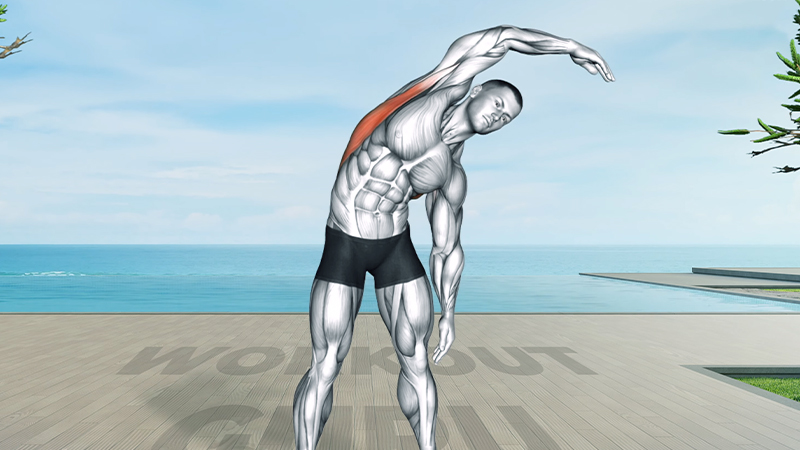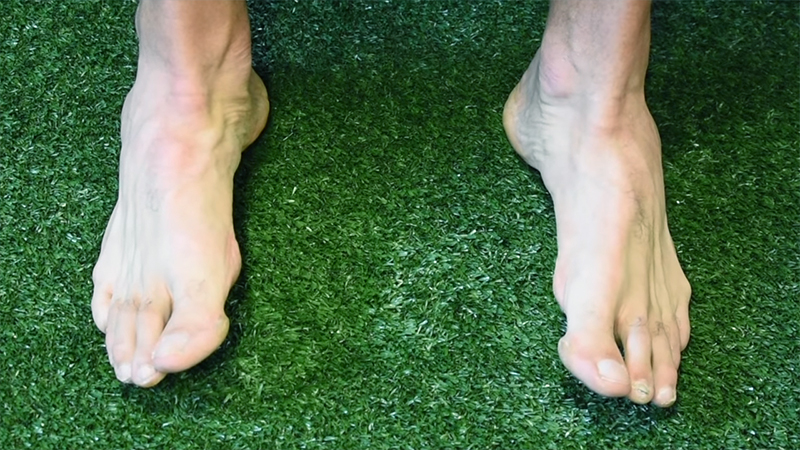As we age, the importance of staying active and maintaining physical well-being becomes increasingly apparent. For seniors, warm-up exercises are not just a preparatory step but a vital component of any exercise routine.
These exercises offer a gentle entry into physical activity, promoting flexibility, reducing the risk of injury, and enhancing overall performance.
In this article, we delve into the world of 10 warm-up exercises for seniors. The warm-up routines featured here are designed to cater to the unique needs and considerations of older adults.
From gentle stretches and low-impact movements to balance-enhancing exercises, these routines serve as a crucial foundation for any physical activity.
10 Warm-Up Exercises For Seniors
Certainly, here are ten warm-up exercises for seniors, each described in a 50-word paragraph:
1. Neck Rolls

Gently roll your neck in a circular motion, first clockwise and then counterclockwise. Neck rolls relieve neck stiffness, promoting flexibility and reducing tension.
This exercise prepares the neck muscles for movement, enhancing the range of motion and reducing the risk of strains during various activities.
2. Shoulder Circles

Rotate your shoulders in circular motions, first forward and then backward. Shoulder circles improve shoulder mobility, reducing stiffness and enhancing flexibility.
This exercise warms up the shoulder muscles, promoting better arm movements and reducing the risk of shoulder injuries during daily tasks.
3. Arm Swings

Swing your arms forward and backward in large motions. Arm swings increase blood circulation to the arms, warming up the shoulder and arm muscles.
This exercise prepares the upper body for activities like reaching and lifting, ensuring a better range of motion and reducing the risk of strains.
4. Side Bends

Stand with feet shoulder-width apart and gently bend from side to side. Side bends warm up the side muscles and stretch the torso.
This exercise prepares the core muscles for movement, enhancing flexibility and reducing the risk of strains during activities that involve twisting or bending.
5. Hip Circles

Rotate your hips in circular motions, first clockwise and then counterclockwise. Hip circles improve hip mobility, reducing stiffness and enhancing flexibility.
This exercise warms up the hip muscles, promoting better movements during activities like walking and bending, reducing the risk of hip discomfort.
6. Knee Lifts

Stand tall and lift one knee toward your chest, then switch to the other knee. Knee lifts warm up the hip and thigh muscles. This exercise prepares the legs for movements like walking and climbing stairs, ensuring better balance and reducing the risk of falls.
7. Ankle Rolls

Sit or stand, and lift one foot off the ground. Rotate your ankle in circular motions, first clockwise and then counterclockwise.
Ankle rolls warm up the ankle joints, reducing stiffness and promoting better foot movements. This exercise reduces the risk of ankle strains and improves balance during walking.
8. March in Place

March in place, lifting your knees high. Swing your arms in rhythm with your steps. Marching in place is a low-impact cardio warm-up that elevates your heart rate, increasing blood flow to muscles. This exercise prepares the entire body for movement, enhancing overall cardiovascular endurance.
9. Wrist Circles

Extend your arms forward and rotate your wrists in circular motions. Wrist circles warm up the wrist joints, reducing stiffness and promoting better hand movements.
This exercise prepares the hands and wrists for activities like grasping and lifting, ensuring better dexterity and reducing the risk of strains.
10. Deep Breathing Exercises

Inhale deeply through your nose, hold your breath briefly, then exhale slowly through your mouth. Deep breathing exercises oxygenate the body, increasing energy levels and reducing stress.
This exercise prepares the body and mind for physical activity, promoting relaxation and enhancing focus and coordination.
Why Is Warm-Up Important For The Elderly?
Let’s discuss some amazing reasons why is warm-up important for the elderly:
Increased Blood Flow
Warm-up exercises help promote increased blood flow to the muscles. This is vital for elderly individuals as it ensures that muscles are adequately supplied with oxygen and nutrients, reducing the risk of muscle strain or injury.
Improved Muscle Flexibility
Warming up before exercise enhances muscle flexibility. For seniors, this is particularly important as it reduces muscle stiffness and the chances of muscle cramps or sprains.
Enhanced Joint Mobility
Warm-up exercises gently move the joints through their range of motion. This is beneficial for elderly individuals who may experience age-related joint stiffness.
It helps improve joint mobility, making it easier to perform exercises and daily activities.
Lowered Risk of Injury
Proper warm-up routines reduce the risk of injury by preparing the body for exercise. This is especially crucial for seniors, as injuries can have more severe consequences.
A warm-up ensures that muscles and joints are ready for the physical demands of the workout.
Increased Heart Rate
Warm-up activities gradually increase the heart rate, helping seniors transition into a higher activity level. This gradual elevation is essential to prevent sudden spikes in heart rate, which could be risky for older individuals.
Mental Preparation
Warm-up exercises provide a moment for seniors to mentally prepare for their workout. This mental readiness is crucial as it helps ensure that they’re focused and prepared to perform exercises correctly.
Reduced Muscle Soreness
Warm-up routines can reduce post-exercise muscle soreness. This is especially beneficial for seniors, as it can make the difference between feeling motivated to continue exercising and giving up due to discomfort.
Improved Balance
Some warm-up exercises, like balance drills, can enhance stability and coordination. This is important for preventing falls, a significant concern for the elderly.
Enhanced Performance
Warming up can lead to better exercise performance. For seniors, this means that they can derive more benefits from their workouts, leading to improved strength, endurance, and overall physical well-being.
Warm-up exercises are an essential component of any exercise routine for seniors, helping ensure that they can exercise safely and effectively.
FAQs
Why are warm-up exercises important for seniors?
Warm-up exercises are essential for seniors as they help prepare the body for physical activity. They increase blood flow, improve muscle flexibility, and reduce the risk of injury.
What types of warm-up exercises are suitable for seniors?
Seniors can benefit from a variety of warm-up exercises, including gentle stretches, low-impact movements, and balance-enhancing activities.
These exercises prepare the body for more strenuous workouts by gradually increasing heart rate and body temperature, ensuring a safe and effective transition into physical activity.
How long should warm-up exercises last for seniors?
Warm-up exercises for seniors should typically last around 5 to 10 minutes. This duration allows for adequate preparation without overexertion. The specific time may vary based on individual needs and the intensity of the planned workout.
Can warm-up exercises be modified for seniors with limited mobility?
Yes, warm-up exercises can be modified to accommodate seniors with limited mobility. Gentle seated stretches, chair-based movements, and low-impact exercises are suitable alternatives for those who may have difficulty with standing exercises or high-impact activities.
How do warm-up exercises benefit seniors’ overall exercise routine?
Warm-up exercises are a critical component of seniors’ exercise routines as they prepare the body physically and mentally for activity. By increasing blood flow flexibility and reducing the risk of injury, warm-up exercises set the stage for a safer, more effective, and enjoyable workout.
Conclusion
Warm-up exercises for seniors are far more than just a preliminary routine; they are the cornerstone of safe, effective, and enjoyable physical activity. By dedicating time to warm-up exercises, older adults set the stage for a successful and rewarding exercise experience.
These routines promote flexibility, reduce the risk of injury, and provide a mental and physical transition into more strenuous activities.
The significance of warm-up exercises for seniors cannot be underestimated. They ensure that muscles and joints are ready for action, reduce the chances of discomfort or injury, and offer a chance for mental preparedness.
By incorporating these exercises into their daily routines, seniors can enjoy exercise with confidence and longevity, enhancing their physical well-being and overall quality of life.
I am a fitness instructor and I have been in the industry for 9 years. I have a passion for health and fitness.
I am a fitness instructor with over 9 years of experience in the industry. My passion is health and fitness and I would love to share my knowledge with you!